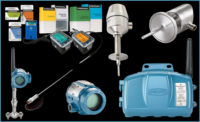Innovation
Virtual, augmented reality move from entertainment to maintenance
VR, AR can help decrease repair time by providing information on the spot

Virtual reality (VR) and augmented reality (AR) are somewhat newcomers to the industrial world, though I can remember Yokogawa demonstrating a virtual reality tour of an oil refining plant several years ago at an ISA show. In the last five years, however, these technologies have been making steady inroads to the manufacturing world, especially in finding useful applications in maintenance. Today, IIoT and Industry 4.0 technologies play an ever expanding role in maintenance.
Nick Boughton, digital lead at systems integrator, Boulting Technology, explains how AR and VR are reshaping plant maintenance. Boulting Technology is a supplier of systems integration, industrial network solutions, LV motor control centers, switchgear, control panels and telemetry.
FE: How can maintenance engineers take advantage of today’s sensor networks?
Nick Boughton: Enabled by Industry 4.0 technologies and the increased networking of equipment, such as programmable logic controllers (PLCs), and supervisory control and data acquisition (SCADA) systems, predictive maintenance uses data obtained by sensors to facilitate consistent monitoring of the condition of all equipment. By analyzing this data, engineers can predict when equipment parts may need servicing or replacing, allowing them to intervene before the system fails.
FE: Where do AR and VR fit into the maintenance equation?
Boughton: AR and VR are taking this level of maintenance one step further. By using a smart phone, pair of “smart glasses” or a headset, maintenance engineers can create a digital representation of the fault and, more importantly, the solution.
VR builds on this even further by placing the engineer in a fully immersive digital environment. With the headset on, the engineer can speed up time, using data to visually pinpoint exactly when the system may fail. This level of maintenance allows repairs to be predicted and planned for, ensuring the correct replacement part is ordered well in advance.
FE: Manufacturers are having difficulties in finding qualified technical help. How can AR or VR help with this situation?
Boughton: As the engineering skills gap continues to grow, with an expected 182,000 people with engineering skills needed each year between now and 2020, having a team with the relevant skills may not always be possible.
The rising gap means many engineers do not have the capabilities to deal with particular equipment faults, until they undergo internal training. This significantly impacts productivity, as rather than hitting the ground running, the engineers will have to undergo extensive training before work can commence.
As AR technology advances, one of the biggest applications will see offsite suppliers, such as Boulting Technology, providing visual support through smart devices. Rather than a simple phone call, the AR system will allow suppliers to show their customers exactly how to service or replace a part. By providing them access to relevant maintenance data, the supplier can suggest the best course of action, which may include sending one of their own engineers out to assist.
With data becoming increasingly accessible through the cloud, this level of support builds on the growing “servitisation” trend, where the end user subscribes as part of a software service model.
FE: How can AR and VR help close the STEM gap?
Boughton: It is also believed that AR and VR can help directly tackle the STEM skills shortage from a training perspective. Not only can budding engineers use the technologies to put theory into practice without impact on the day-to-day running of the plant, but VR can also be incorporated into the training room, enabling apprentices and new engineers to explore the plant environment digitally.
While the future looks bright for the use of VR and AR in engineering, there are still challenges that lie ahead, which are mainly due to the complex nature of engineering systems and models. That said, both technologies are already making an enormous impact on the sector, as they allow access to situations that would otherwise be difficult to visualize or might typically be inaccessible. In the coming years, Boulting hopes to see a far more integrated approach between hardware and software solutions.
For more information, Kara Doble, Boulting Technology, Phone: 01785 245466.
Further FE Information on Maintenance
Predictive maintenance, Internet of Things can lead to big maintenance savings, FE, July 2017.
TPM, integrating maintenance systems and the cloud, FE, July 2018.
'Industry 4.0' network architecture relies on interconnectivity, FE, Nov. 2017.
AI, IIOT help take the guesswork out of maintenance planning, FE (Engineering R&D), Feb.
Looking for a reprint of this article?
From high-res PDFs to custom plaques, order your copy today!






